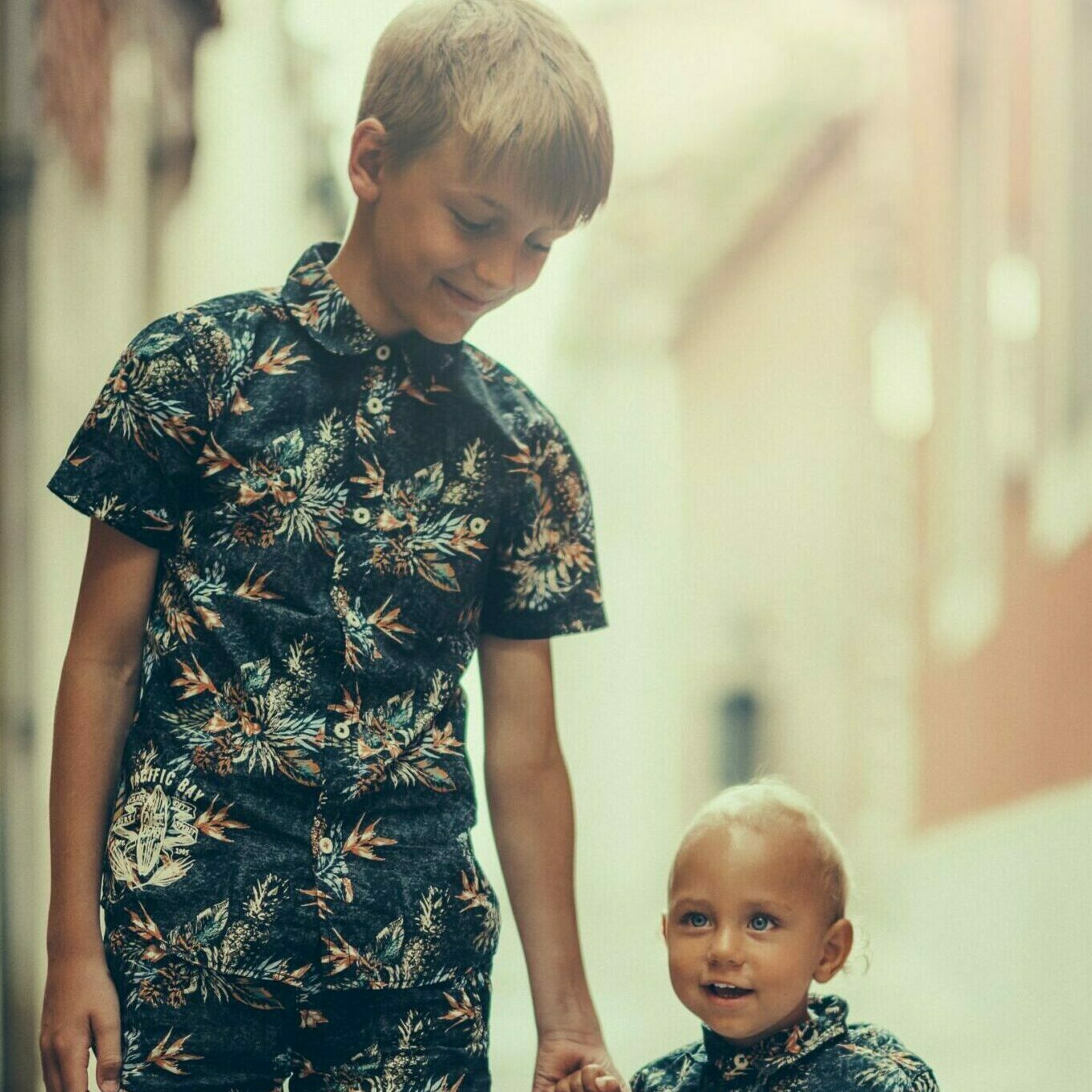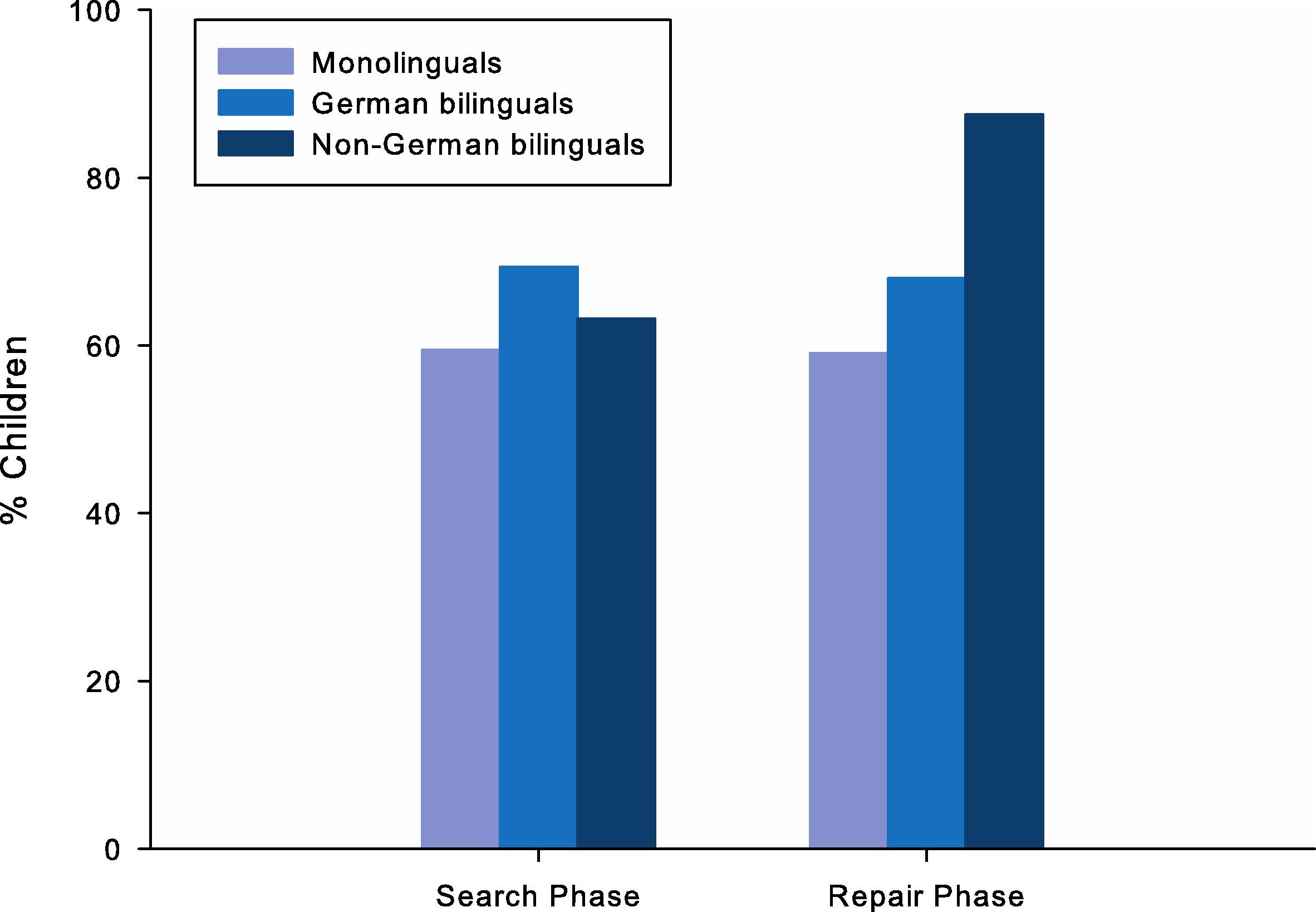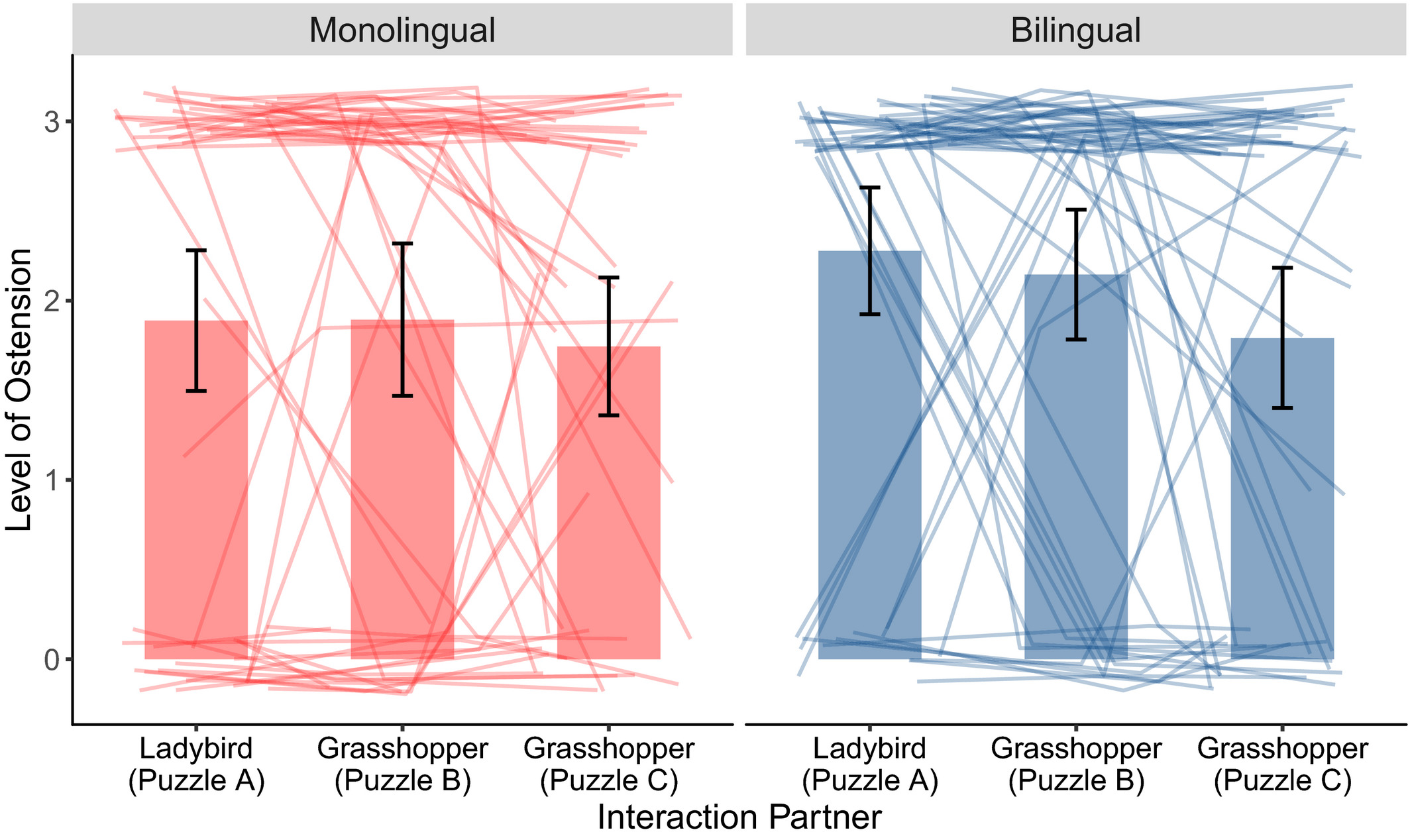
Adapt to your interaction partner
Learning words is only the first step in language acquisition. After being able to express basic observations, thoughts and wishes, the next step is to become a competent conversationalist. One has to know when to speak, why to speak
and how to speak with different partners. Intercultural children have fewer words and grammatical skills at their disposal compared to their monolingual peers. This leads to greater challenges in expressing the message linguistically
and may lead to the need to supplement it with non-linguistic means. In addition, bilinguals are more likely to face misunderstandings because they may choose a language that their interaction partner does not speak or because they
can only express certain units in one language.
In this research project I am investigating: How do intercultural children’s pragmatic skills develop? What means do young children choose to express their intentions? How and when do they adapt these means to a challenging interaction
partner? Are the means and adaptation strategies specific to one of the languages they are learning or conditioned by their experiences of difficult communication?
Michaela Davison (2021-01-22). Zweisprachig aufwachsen – Das sind die Vorteile. Swissmom
(2020-02-19) Zweisprachige gestikulieren besser. 20 Minuten
(2020-02-19) Une gestuele «bilingue». Le Temps
(2019 – Ausgabe 7) Zwei Sprachen – mehr Feingefühl. bild der wissenschaft
Daniela Albat (2019-05-10) Zweisprachige sind sensiblere Gesprächspartner. wissenschaft.de
(2019-05-09)
Zweisprachige Kinder haben feineres Gespür in der Kommunikation. KURIER
(2019-05-09) Zweisprachigkeit nutzt Kindern in Gesprächen. ORF.at
Florina Schwander (2019-04-21) Zweisprachige kommunizieren besser. Das Schweizer Elternmagazin
Aleksandra Hiltmann (2018-08-08) Kinder müssen Sprachen auseinanderhalten können. Tages-Anzeiger
(2018-02-21) Podcast. Radio Zürisee
(2017 – Ausg. 2) Kommunikationsfähigkeiten zweisprachiger Kinder. Logos
Stephanie Wermelinger (2017-06-17) Growing up with two languages. Blog on Learning and Development
(2017 – April) Wussten Sie, dass Zweisprachigkeit auch andere kommunikative Fähigkeiten von Kleinkindern erhöht? beziehungsweise
Magdalena Seebauer (2017-04-28) Zweisprachige Kinder klären Missverständnisse. Südostschweiz


